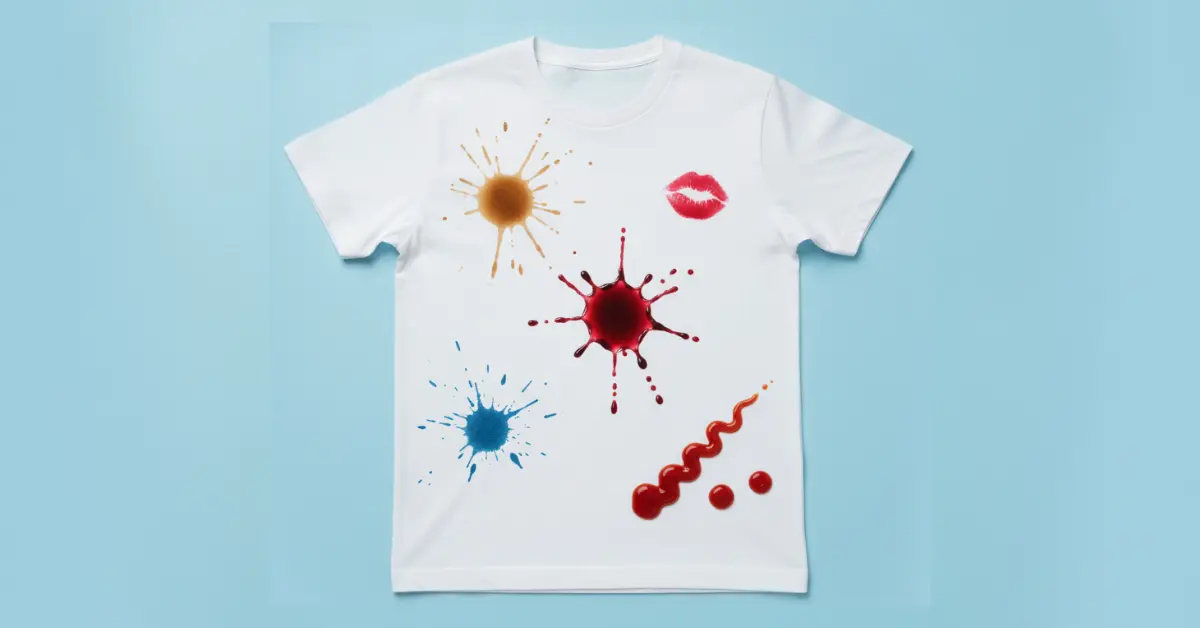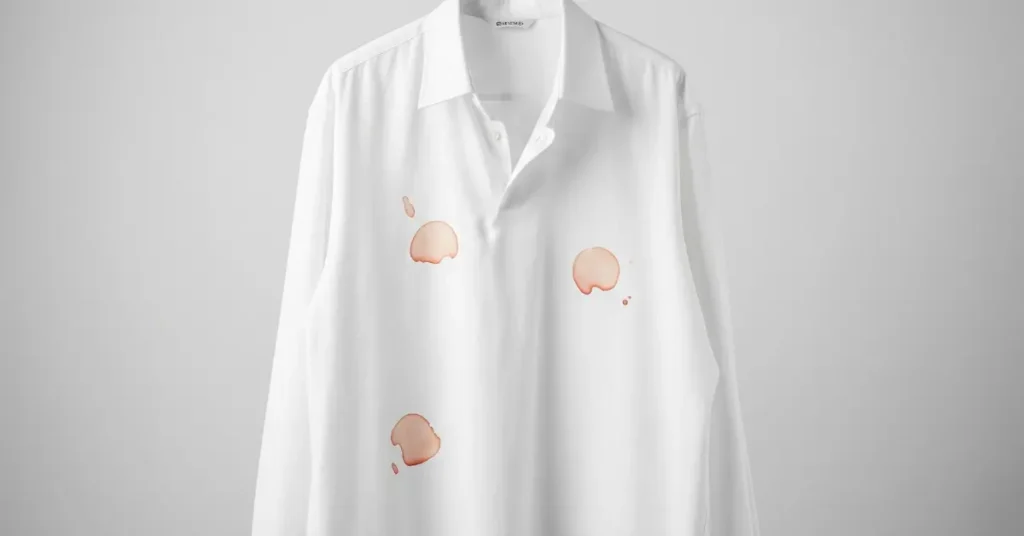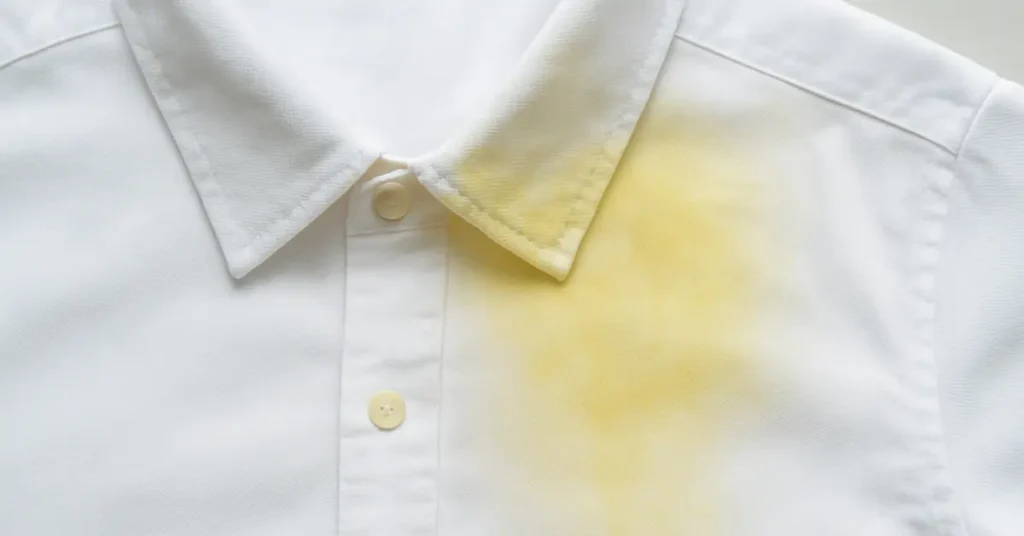Coffee, tea, ink, ketchup, and sweat stains always appear at the worst time and ruin your favorite clothes.
I hate it when that happens. You try washing it, but it doesn’t come out. Sometimes you don’t even know what type of stain it is. I’ve had the same problems plenty of times.
In this guide, I’ll tell you how to figure out what kind of stain it is and the easiest way to get it out without ruining your clothes.
10 Types of Stains and Easy Ways to Get Them Out
These are the stains I see most at home and deal with all the time. Let’s see how to spot them and get them out.
1. Coffee & Tea Stains
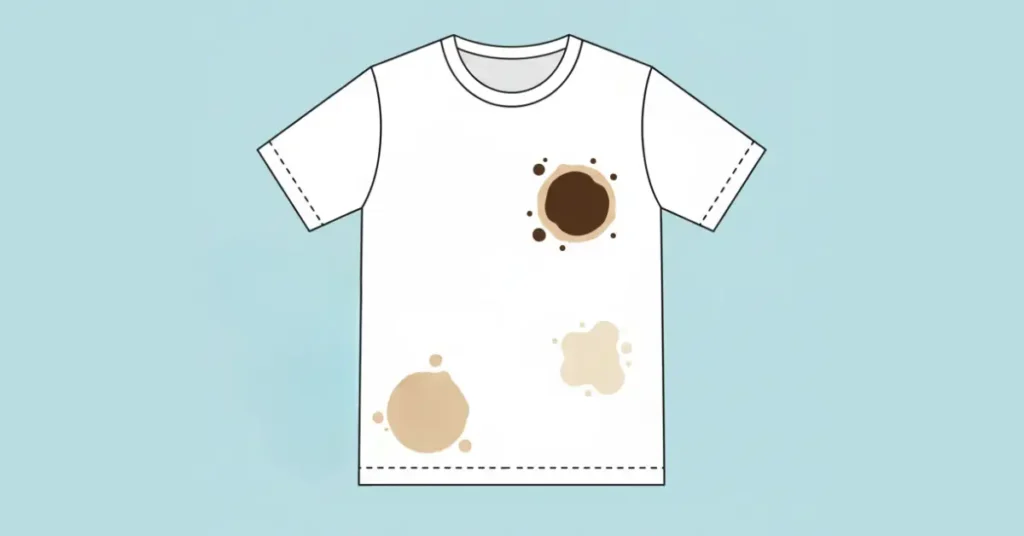
Spilling tea or coffee on clothes can ruin my morning faster than anything else. These stains are tricky because the tannins in these drinks leave a deep yellow or brown mark if not treated quickly.
Here’s how I handle it:
- Blot the stain immediately. Use a clean cloth to soak up as much liquid as possible. Don’t rub it, just blot.
- Rinse with cold water. Hold the fabric under running cold water from the back so the stain moves out of the fibers instead of deeper in.
- Treat the stain:
- Fresh stain: Rub a little liquid laundry detergent or dish soap onto the spot. Let it sit for about 5 minutes.
- Older stain: Make a paste of baking soda and water, or use diluted white vinegar, and gently apply it to the stain.
- Wash the fabric:
- Cotton/Polyester: Machine wash with oxygen bleach (avoid chlorine bleach).
- Silk or wool: Wash gently in cold water with a few drops of mild detergent. Don’t use vinegar.
- White clothes: Use oxygen bleach.
Tip: Always check that the stain is gone before putting clothes in the dryer. Heat can make it permanent.
2. Oil & Grease Stains
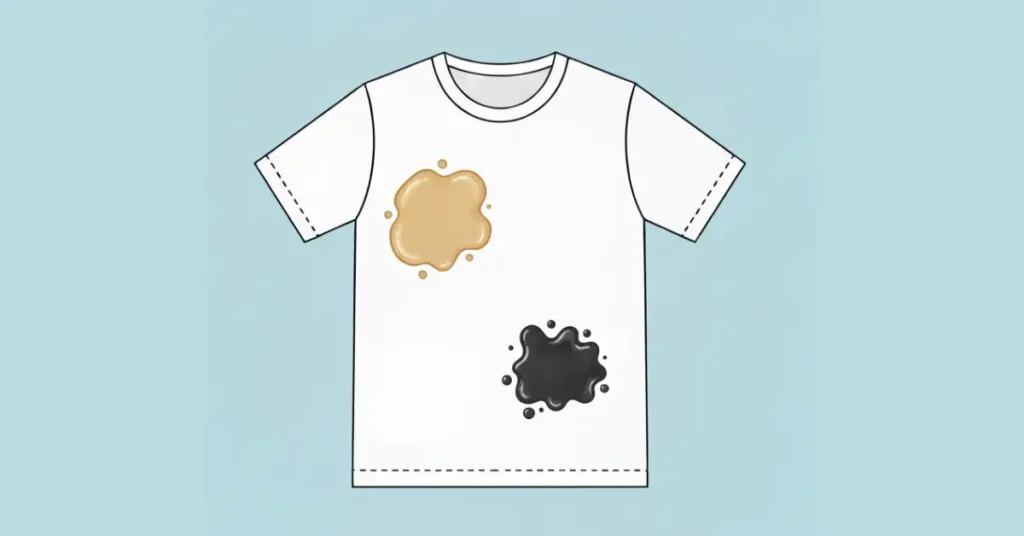
Oil and grease from cooking, butter, motor oil, salad dressings, or fast food are hard to remove because they don’t mix with water. If you don’t treat them quickly, they can leave dark, permanent patches.
When I get these stains, I start by gently blotting off the extra oil with a clean cloth. Rubbing just spreads the stain, so I never do that.
Then I sprinkle some baking soda, cornstarch, or baby powder on the spot and let it sit for 15-30 minutes to absorb more oil. After brushing it off, I repeat if the stain still looks fresh.
For the next step, I put a few drops of liquid dish soap (like Dawn) directly on the stain and rub it gently with my fingers or a soft brush. I leave it for about 5-10 minutes before washing.
Washing depends on the fabric. Cotton or polyester can go in the machine with the hottest water that’s safe for the fabric.
For silk, wool, or delicate materials, I soak them in cold water with a mild detergent and avoid scrubbing. For stubborn stains on strong fabrics like jeans, I sometimes use a laundry stain remover spray before washing.
3. Sweat & Deodorant Stains
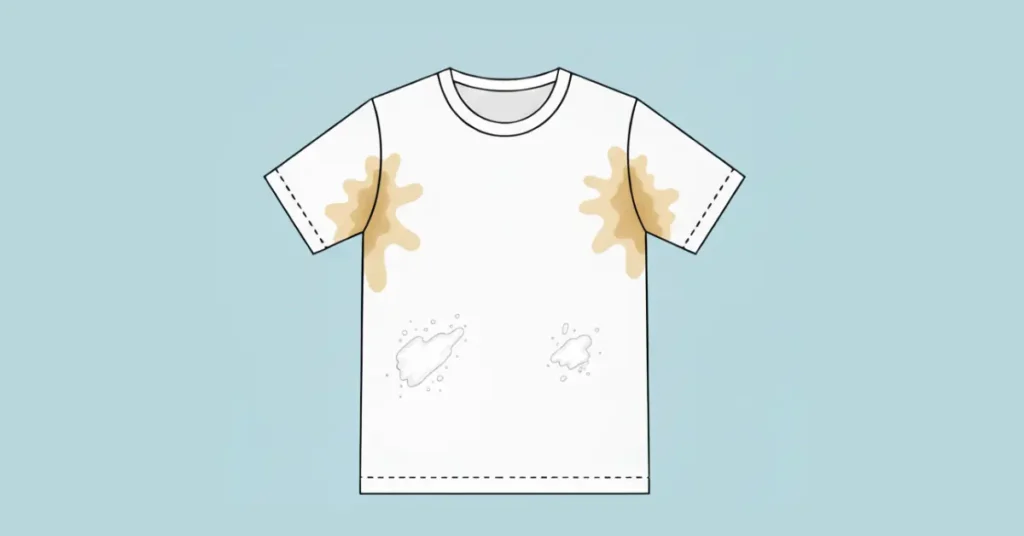
Yellow stains and deodorant marks appear when sweat, body salts, or deodorants react with fabric. These yellow stains on clothes are common, especially on white T-shirts.
What I do:
I spread a paste of three parts baking soda and one part water over the stain and leave it for at least 30 minutes. Then, I dip the stained area in a vinegar and water solution for another 30 minutes to break down the deodorant salts.
After this, I wash the clothes according to fabric type. Cotton and polyester can go in warm water with strong detergent, silk and wool need a soft detergent, and whites always do best with oxygen bleach.
4. Ink Stains (Pens, Markers & Highlighters)
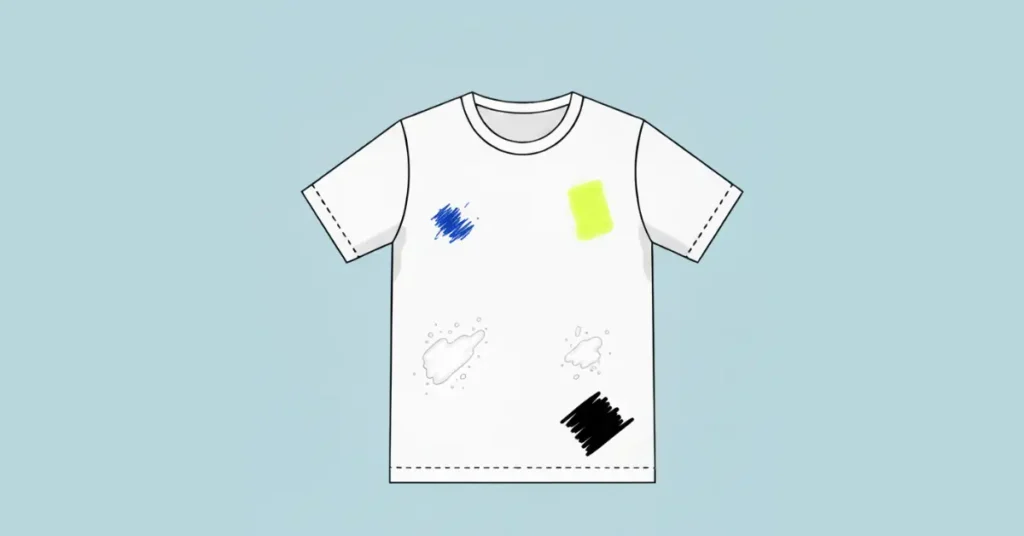
Ink stains can become permanent if you don’t treat them quickly. Different types of ink, like ballpoint, gel, fountain, markers, or highlighters, need slightly different treatments.
For fresh stains, I gently blot the area with a cloth or paper towel to soak up as much as possible. Don’t rub because that will spread the stain.
Next, I treat the stain based on the kind of ink:
- Ballpoint ink: Use rubbing alcohol, hand sanitizer, or a little hair spray.
- Gel ink: Strong alcohol (90% isopropyl) works best.
- Permanent marker: Use acetone, but only on cotton or polyester fabrics.
After treating the stain, I rinse the area with cold water and wash the garment with detergent. If the stain is still there, I repeat the process until it comes out. You can also follow this detailed guide on how to take ink out of clothes.
5. Wine Stains (Red & White Wine)
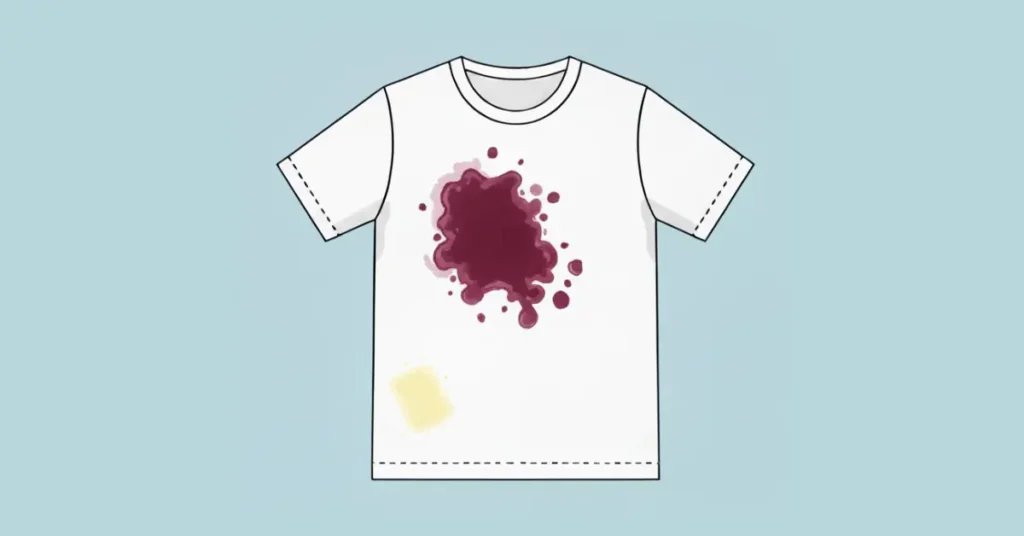
Red wine stains can be tough because the tannins get absorbed into the fabric. White wine looks harmless, but when it dries, it can leave a yellow stain.
Here is how I remove wine stains:
- Dab the stain immediately with a clean cloth to soak up the liquid.
- Rinse the fabric under cold water.
- Sprinkle baking soda or salt on the stain, let it dry, then brush it off.
- Apply a mixture of dish soap and hydrogen peroxide and leave it for 5-10 minutes.
- Wash the garment with warm water. Repeat the steps if the stain is still visible.
6. Blood Stains
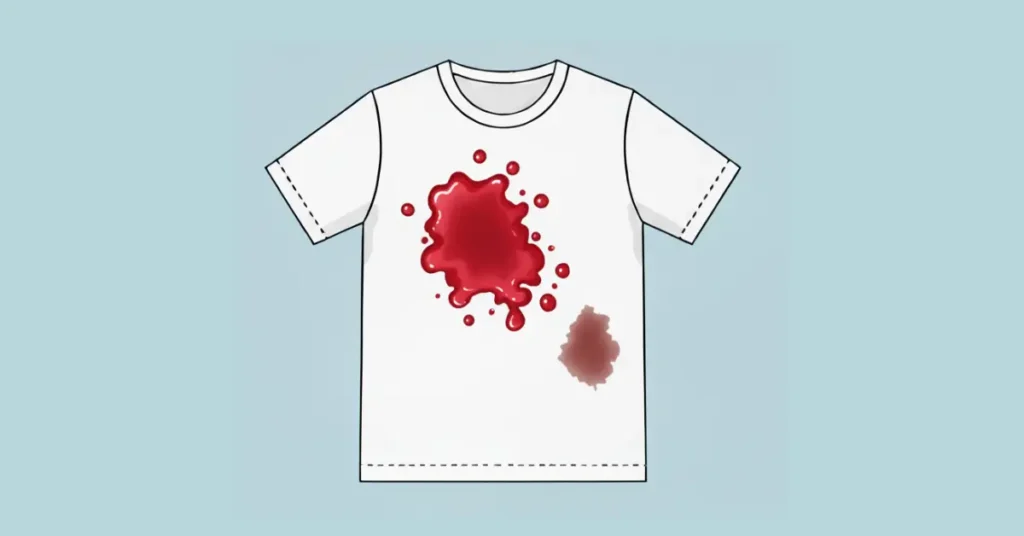
Blood stains can be tricky because they contain proteins that stick to fabric fibers when they dry.
The first thing I do is rinse the stained area with cold water. I never use hot water because it can set the stain permanently.
Next, I apply hydrogen peroxide directly to the stain and gently blot it with a soft cloth until the stain is gone. If I don’t have hydrogen peroxide, I make a paste of baking soda and water and apply it to the stain instead.
Once the stain is removed, I wash the garment as usual.
7. Grass Stains
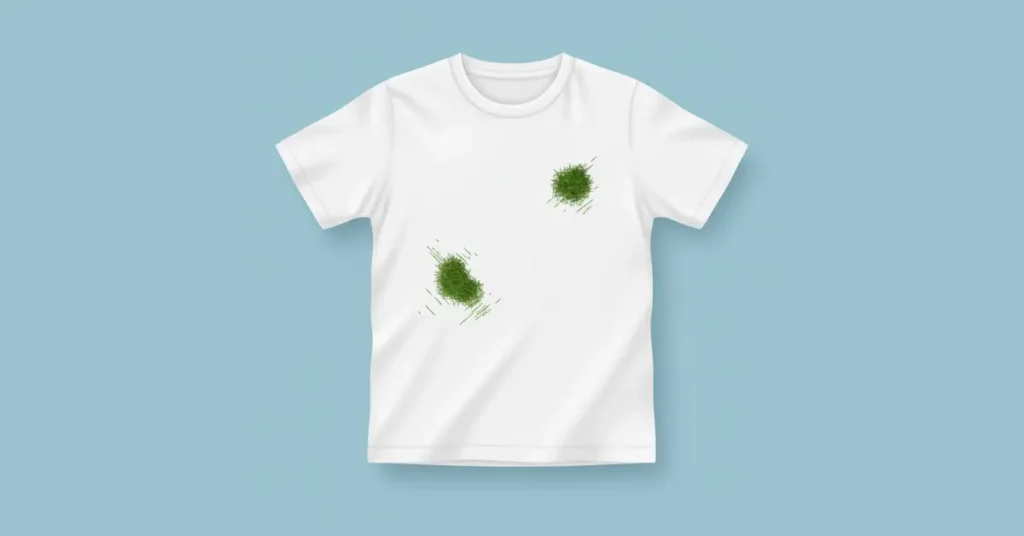
Grass stains can be tough because the green pigments get pushed deep into the fabric when clothes rub against grass.
The first thing I do is apply an enzyme-based liquid detergent and rub it gently for 10 to 15 minutes. After that, I dip the garment in cold water to help loosen the stain.
To break down the chlorophyll in the grass, I sometimes dab the stained area with vinegar or rubbing alcohol. If the stain is still stubborn, I make a paste of baking soda and water, apply it to the spot, and let it sit for about 30 minutes.
Once that’s done, I wash the garment normally, then the stain usually comes out completely.
8. Makeup Stains
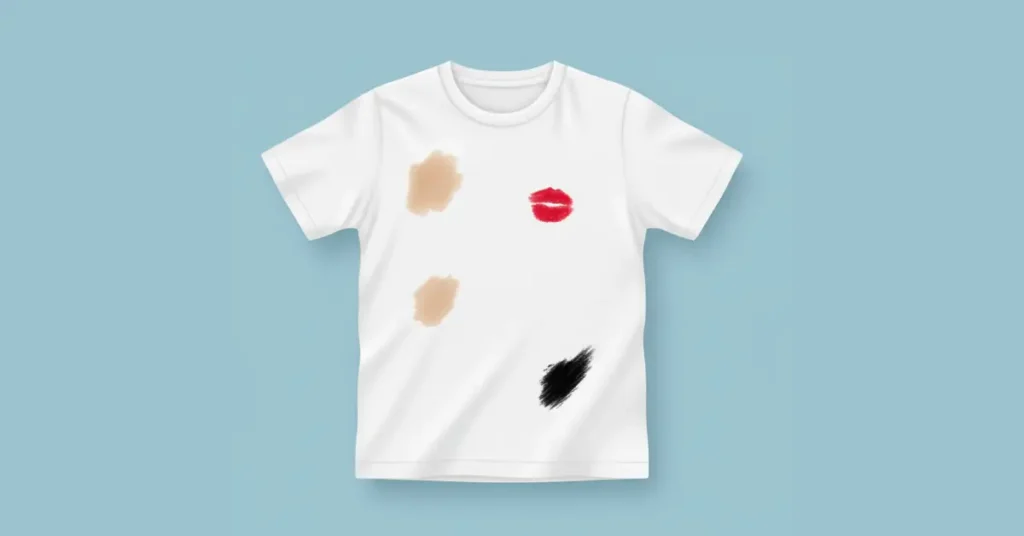
Makeup like foundation, lipstick, and mascara can stick to fabric because of the oil and wax in them.
I start by scraping off any excess product with a spoon or a card. Each type of makeup needs a different treatment:
- Foundation: Apply liquid dish soap and leave it for 10-15 minutes.
- Lipstick: Dab the stain with a cotton pad dipped in rubbing alcohol.
- Eyeliner or Mascara: Use an oil-free makeup remover.
After treating the stain, I wash the garment according to the fabric instructions.
9. Chocolate Stains
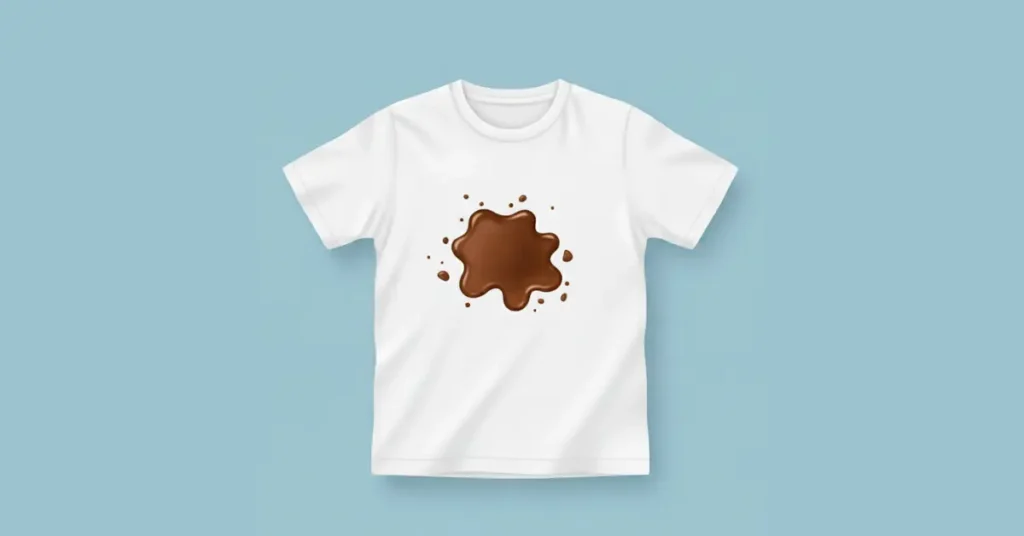
Chocolate stains can be tricky, especially once they have dried.
I start by carefully removing any extra chocolate with a knife. Then I apply a little dish soap to the stain and rub it gently with my fingers. After that, I soak the fabric in cold water for about 30 minutes to help loosen the stain.
For white clothes, I sometimes use oxygen bleach to make sure the stain comes out completely. Finally, I wash the garment in the hottest water that is safe for the fabric. If you want to learn in more about removing stains from white clothes, you can follow this guide.
10. Tomato & Ketchup Stains
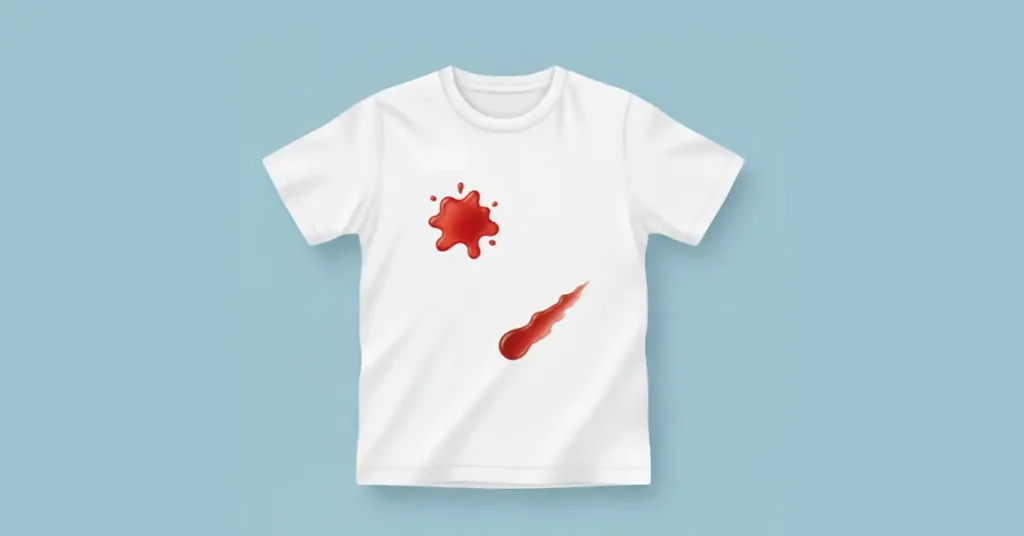
Tomato and ketchup stains can be stubborn because the pigments stick to the fabric.
I start by scraping off any extra ketchup with a paper towel. Then I rinse the stained area from the back under running water and let it soak for a few minutes.
Next, I apply a little liquid detergent or a vinegar solution and leave it on the stain for about 10 minutes. After that, I wash the garment in cold or warm water, depending on the fabric. I never put these fabrics in the dryer until the stain is fully removed.
Stain Removal Do’s & Don’ts
Here are some tips I follow whenever I deal with stains:
| Do’s | Don’ts |
|---|---|
| Treat stains as soon as they happen. | Don’t scrub stains aggressively. |
| Test any cleaning method on a small hidden area first. | Avoid hot water on protein stains like blood, sweat, or milk. |
| Blot stains gently before washing. | Never dry clothes until the stain is completely gone. |
| Start with cold water for most stains | Don’t mix ammonia and bleach. |
| Keep common stain removers at home: baking soda, vinegar, dish soap, and lemon. | Don’t assume one method works for all fabrics. |
| Use enzyme-based cleaners for organic stains (food, sweat, grass, urine). | Be gentle with delicate fabrics like silk, wool, or linen. |
Conclusion
Stains are annoying, but most of them can come out if you treat them the right way. Ink, oil, makeup, or grass, each one needs a different method.
These tips have worked for me, and I hope they help you too. Next time there’s a spill, you’ll know what to do.
What’s the toughest stain you’ve ever had to deal with? Share it in the comments, I’d love to know.
FAQs
What is the hardest stain to remove?
Grease, oil, red wine, blood, ink, and grass stains are the toughest.
Does Dawn dish soap and baking soda remove stains?
Yes, they do. Dawn works really well on greasy stains, and baking soda helps lift stains like oil, sweat, and even grass.
Is vinegar or hydrogen peroxide better for stains?
It depends on the stain. Vinegar is great for food stains and for softening fabric, while hydrogen peroxide is more effective on blood, sweat, and other protein stains.
Can you mix Dawn, vinegar, and baking soda?
You can, but it’s not always needed. It’s better to use them one at a time for different stains.
How long does baking soda take to remove stains?
Usually 15 to 30 minutes. For tougher stains, you can leave it longer before washing.
What is the easiest way to remove coffee stains?
The easiest way is to act quickly. First, blot the stain with a clean cloth. Then rinse the back of the fabric under cold running water.
After that, rub in a little dish soap or liquid detergent with your fingers and let it sit for a few minutes before washing. If the stain is old, you can try a mix of baking soda and water.
How do I prevent ink stains on clothes?
Always keep them capped when you’re not writing, and avoid carrying them in shirt or pants pockets. If you really need to keep a pen in your pocket, clip it upright so the tip doesn’t touch the fabric.
Also, check your clothes before putting them in the wash because an unnoticed pen can ruin a whole load of laundry.
